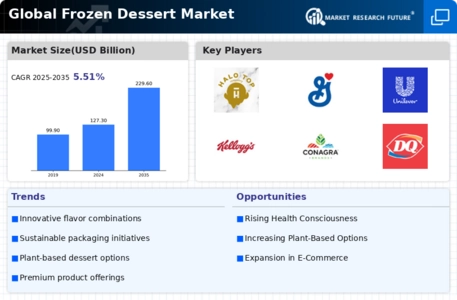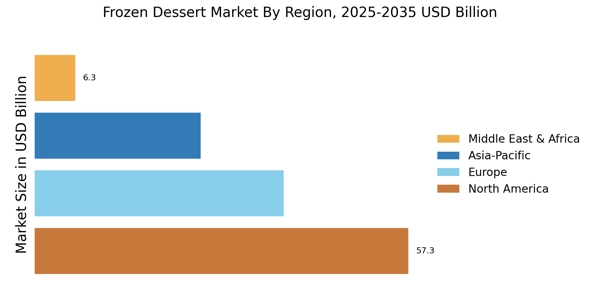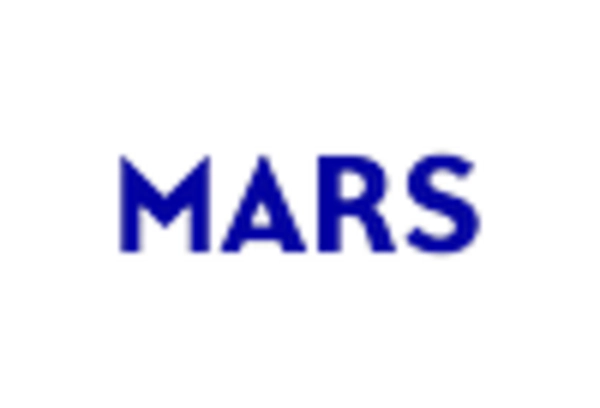Frozen Dessert Market Summary
As per MRFR analysis, the Frozen Dessert Market Size was estimated at 127.3 USD Billion in 2024. The Frozen Dessert industry is projected to grow from 134.32 USD Billion in 2025 to 229.69 USD Billion by 2035, exhibiting a compound annual growth rate (CAGR) of 5.51 during the forecast period 2025 - 2035.
Key Market Trends & Highlights
The Frozen Dessert Market is currently experiencing a dynamic shift towards health-conscious and premium offerings.
- Health-conscious offerings are increasingly influencing consumer preferences in the Frozen Dessert Market.
- North America remains the largest market, while the Asia-Pacific region is recognized as the fastest-growing area for frozen desserts.
- Ice cream continues to dominate the market, yet sugar-free options are rapidly gaining traction among health-focused consumers.
- Innovative flavors and convenience-driven products are key drivers propelling market growth in both conventional and sugar-free segments.
Market Size & Forecast
| 2024 Market Size | 127.3 (USD Billion) |
| 2035 Market Size | 229.69 (USD Billion) |
| CAGR (2025 - 2035) | 5.51% |
Major Players
Unilever (GB), Nestle (CH), General Mills (US), Mars Incorporated (US), Kraft Heinz (US), Dreyer's Grand Ice Cream (US), Blue Bell Creameries (US), Häagen-Dazs (US), Breyers (US)


















Leave a Comment